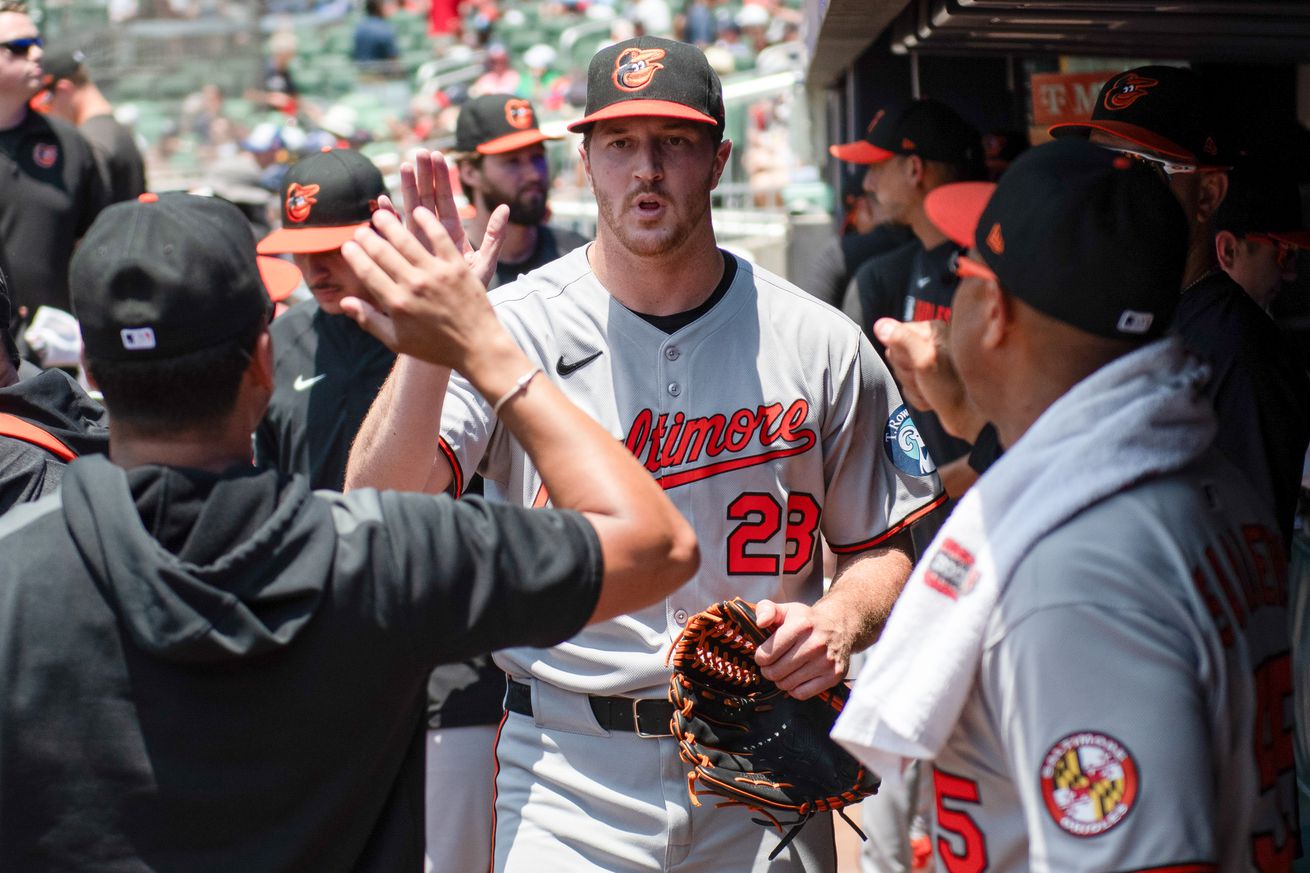
The lefty’s struggles last year were taken as a symbol of the GM’s failure. Now that the former has rebounded, how should we think of the trade?
The Marlins come to town this weekend. At 42-50, an identical record to the Orioles, they wouldn’t appear to be playoff contenders, but they do have one freshly minted All-Star, and that’s left-hitting outfielder Kyle Stowers, who’s hitting .279 with 16 homers and an .859 OPS. It still stings a bit. The onetime Orioles prospect was continually blocked from playing time here, visibly frustrated with his role, and last July was dealt to Miami, along with Connor Norby, for left-handed starter Trevor Rogers.
With Rogers having posted a 7.11 ERA in four starts in ’24, this deal stunk to high heaven in the eyes of Birdland even before Stowers broke out this year. As the Orioles played themselves out of contention this year (maybe?), it’s looked even worse as a reflection on GM Mike Elias. Meanwhile, the Orioles were forced to sign multiple corner bats this offseason because—adding salt to the wound—none of their lefty outfielders are coming close to Stowers’ production (unfortunate case-in-point: Heston Kjerstad).
Well, what now that Rogers unexpectedly has a 1.57 ERA in 28 innings in 2025? The 27-year-old’s breakout is almost certainly coming during a lost Orioles season, but Rogers is doing it for cheap, at $2.6 million, so while arbitration-eligible in 2026, he’s almost certainly gettable next year. A rotation of a healthy Kyle Bradish, Grayson Rodriguez, Tyler Wells, Dean Kremer and Rogers doesn’t sound so bad.
Recall that Rogers didn’t have a non-existent pedigree when the O’s signed him. In 2021, Rogers was an All-Star and Rookie of the Year runner-up to the Reds’ Jonathan India. But he visibly regressed in 2022, with an ERA that jumped from 2.64 as a rookie to 5.47 the following summer, and his WHIP from 1.150 to 1.505. A biceps injury limited him to just four starts in 2023, and he had a 4.53 ERA and 1.528 WHIP in 21 games in 2024 before the Orioles acquired him from Miami. After allowing 15 runs on 25 hits and 10 walks in 19 innings as an Oriole, the team optioned him to Norfolk to iron out issues with mechanics and confidence.
Fans deemed the deal a disaster, while Norfolk coaches worked with Rogers to get his arsenal back. Meanwhile Rogers, who’s talked about the mental hurdles he’s faced, got to working with a sports psychologist to get his mind right, too.
Is he all better now? Though a knee injury guaranteed that he wouldn’t make the club out of spring training (another occasion for fans to groan about the trade), Rogers is a much-changed pitcher in the five starts he’s made since May 24 against the Red Sox, Rays, Rangers (twice) and the Braves. Three of those outings were scoreless, including a 6 2/3 gem against the Braves on Sunday. In total, Rogers has allowed a combined five runs in 28 innings, and has struck out 24 batters in 28 innings while walking just eight. His WHIP of 0.872 is far and away the lowest of his career, and so is his walk rate of 2.5.
Fastball velocity is one area of visible improvement. At one point last year Rogers was throwing 88 mph at some points last year, but he’s been clocked in the mid-90s this season, and is averaging 93.3 mph, close to where he was in his All-Star rookie season (93.6 mph). This is a very welcome sign for Rogers, whose fastball velo had been declining each season since 2022.
The Orioles have also helped Rogers reshape his pitches. In 2025, Rogers has added a brand-new sweeper, now his No. 1 putaway pitch. His slider, an older weapon, has gained new vertical and horizontal break since Rogers joined the club. His delivery is looking more like what it was in 2021, thanks to tweaks to his release point.
The results are bearing out what we’re seeing on the field. Rogers is getting more swings-and-misses on his fastball than any year since 2020. Hitters are averaging .167 against his changeup and .143 off his slider, both career bests. His new sweeper has a ridiculous 56.3% whiff rate.
The peripherals suggest that a 1.57 ERA is artificially low, but also that Rogers is pitching really well. An expected ERA of 3.24 is very good, and so is an expected opposing average of .236. Rogers is excelling right now at missing bats, and especially at drawing weak contact, as a 5.2% barrel rate attests. This last stat is right around his 2021 performance (5.0% that year).
It’s good to hear Rogers talk about his own turnaround, and the positive role the Orioles played in it. “I just put too much pressure on myself and self-doubt crept in and a bunch of other things. Really, I had to take a hard look in the mirror and figure some things out and just get better,” he told reporters recently. “I think the Orioles did an unbelievable job as far as the plan in place. Obviously, I didn’t understand the plan at the time when getting sent down, but I think we had a long-term plan here, and I think it’s finally coming to fruition.”
It’ll be a strange weekend for Rogers, who was taken by Miami with the 13th-overall pick in the 2017 draft and spent seven years with the organization. For O’s fans, it’ll be a watch-and-wait situation for a deal that’s come to symbolize the struggles of the rotation, the team, and our assessment of our general manager. The worst version goes, “The Orioles gave away two prospects for nothing because they can’t scout, and they’ve wasted the talent window with an unacceptably bad rotation.” The best is, “Rogers was a steal, and just needed some coaching to find his old form.” Which version is closer to the truth is another thing we’ll find out as this season unfolds.
